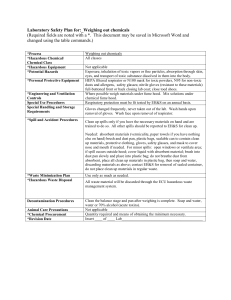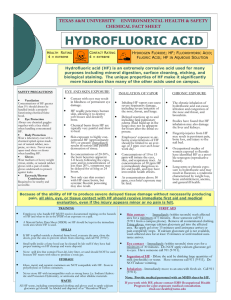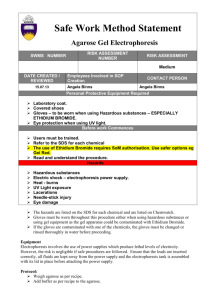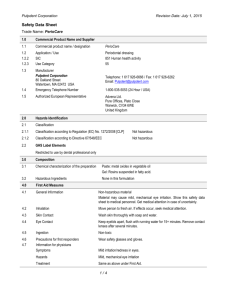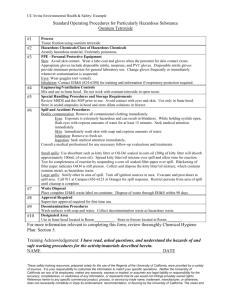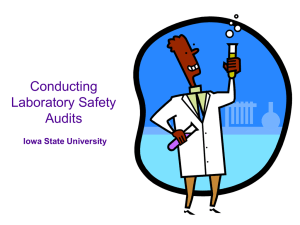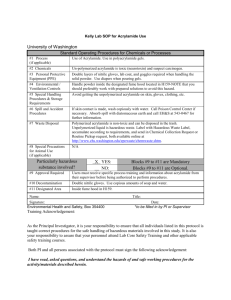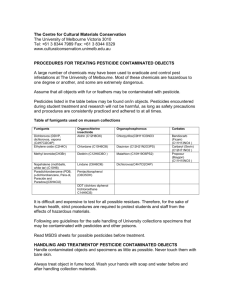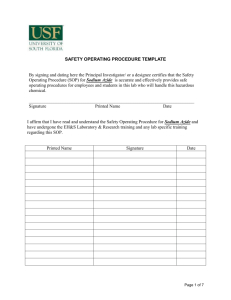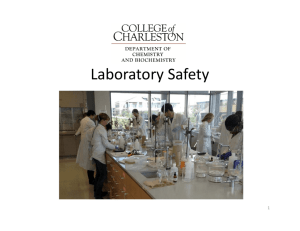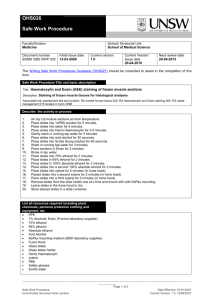Fall_2011_StyLab_training
advertisement
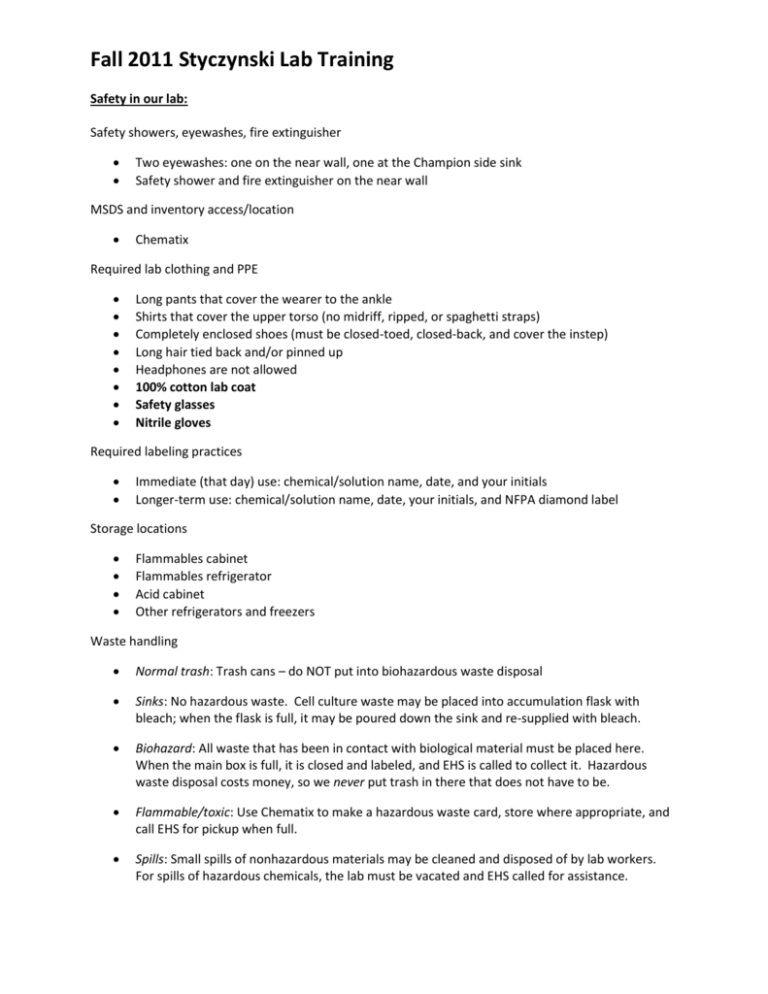
Fall 2011 Styczynski Lab Training Safety in our lab: Safety showers, eyewashes, fire extinguisher Two eyewashes: one on the near wall, one at the Champion side sink Safety shower and fire extinguisher on the near wall MSDS and inventory access/location Chematix Required lab clothing and PPE Long pants that cover the wearer to the ankle Shirts that cover the upper torso (no midriff, ripped, or spaghetti straps) Completely enclosed shoes (must be closed-toed, closed-back, and cover the instep) Long hair tied back and/or pinned up Headphones are not allowed 100% cotton lab coat Safety glasses Nitrile gloves Required labeling practices Immediate (that day) use: chemical/solution name, date, and your initials Longer-term use: chemical/solution name, date, your initials, and NFPA diamond label Storage locations Flammables cabinet Flammables refrigerator Acid cabinet Other refrigerators and freezers Waste handling Normal trash: Trash cans – do NOT put into biohazardous waste disposal Sinks: No hazardous waste. Cell culture waste may be placed into accumulation flask with bleach; when the flask is full, it may be poured down the sink and re-supplied with bleach. Biohazard: All waste that has been in contact with biological material must be placed here. When the main box is full, it is closed and labeled, and EHS is called to collect it. Hazardous waste disposal costs money, so we never put trash in there that does not have to be. Flammable/toxic: Use Chematix to make a hazardous waste card, store where appropriate, and call EHS for pickup when full. Spills: Small spills of nonhazardous materials may be cleaned and disposed of by lab workers. For spills of hazardous chemicals, the lab must be vacated and EHS called for assistance. Fall 2011 Styczynski Lab Training Pyridine handling Pyridine is a commonly-used hazardous chemical in our lab. It is kept in the flammables refrigerator, and may only be opened in the fume hood. When working with pyridine, wear two layers of gloves, and if you spill or spatter any onto your hands, remove the outer gloves immediately and replace them. Ethidiumbromide handling/gel area Ethidum bromide (EtBr) is a carcinogen, and must be kept contained to the gel area. All waste from the gel area must be placed in the trash and liquid waste receptacles kept there. Do not touch anything outside the gel area with gloves that have been contaminated with EtBr. (In other words, if you touch anything in the gel area, that pair of gloves does not get to touch anything outside it. NEVER touch anything in the gel area without gloves.) Protocols Common lab protocols are kept in the black notebook on the bench. Equipment overview: Centrifuges Samples must always be balanced. If you must spin at a temperature other than ambient, reset to 25 C when your spins are done. Water baths These take time to heat, and should be turned off when not in use. Refill with deionized water as necessary. Incubators We have a 30°C incubator for yeast, and a 37°C incubator and shaker for bacteria. Incubators should remain on and set to their specified temperatures at all times. If you need to change the temperature for any reason, talk to all relevant members of both labs to make sure it’s okay, and clearly post what change you made and when it will be changed back to normal. Hot plates TURN OFF when not in use. Autoclave You must receive training on this equipment before using it. Follow the schedule for draining/maintenance as posted by the Champion lab. Thermoshaker/cycler/dry bath Turn off when not in use. Fall 2011 Styczynski Lab Training CentriVap You should receive training on this equipment before using it. Before drying a sample, make sure that the cold trap is on and at the proper temperature. Turn off after use. More than one person can use the CentriVap at the same time without worry of sample contamination. Microscope Our visible-spectrum light microscope is kept on the bench. Turn it off and replace the dust cover when not in use. Do not use the Champion lab fluorescent microscope without specific permission and supervision. Spectrophotometer TURN OFF when not in use – lamps are expensive! Nanodrop/cell counter You should receive training on this equipment before using it. Cell counter slides are biohazardous waste. Fume hood Proper airflow can be checked by watching a Kimwipe taped to the bottom of the sash - the Kimwipe should blow into the fume hood. Do not leave equipment or chemicals in the hood unnecessarily. Work with the sash as low as possible to allow you access. Do not raise it above the maximum working height. Microarrayer You must receive training on this equipment before using, or doing anything whatsoever to tamper with it (or McKenzie will end you). GC-MS You must receive training on this equipment before using, or doing anything whatsoever to tamper with it (or Katie will end you). After general usage training, you should still ask for assistance if you find yourself needing to do something new. NEVER turn anything on this equipment off without instruction/supervision from someone who knows what they’re doing.
